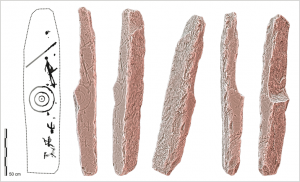Iberian ‘warrior’ stelae have captured the imagination of researchers and the public for more than a century. Traditionally, stelae were considered ‘de-contextualised’ monuments, and research typically focused on the study of their iconography, paying little or no attention to their immediate contexts. As a result, despite the large number of these stelae known to date (c. 140) and the ample body of literature that has dealt with them, fundamental questions remain unanswered. The paper, published in open access by a group of researchers of the British Universities of Durham and Southampton, the Spanish Universities of Seville and Granada, the Polish Adam Mickiewicz University from Poznań, and two CSIC institutes, among them IRNAS, in the prestigious British journal Archaeological and Anthropological Sciences, aims to demonstrate the potential of a multidisciplinary and contextual approach to push forward the research agenda on these monuments through a case study as the Mirasiviene stela.

